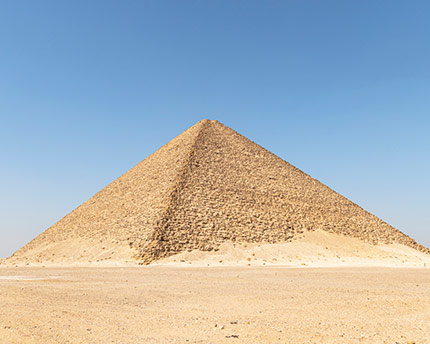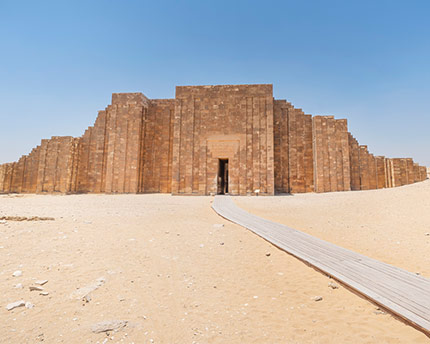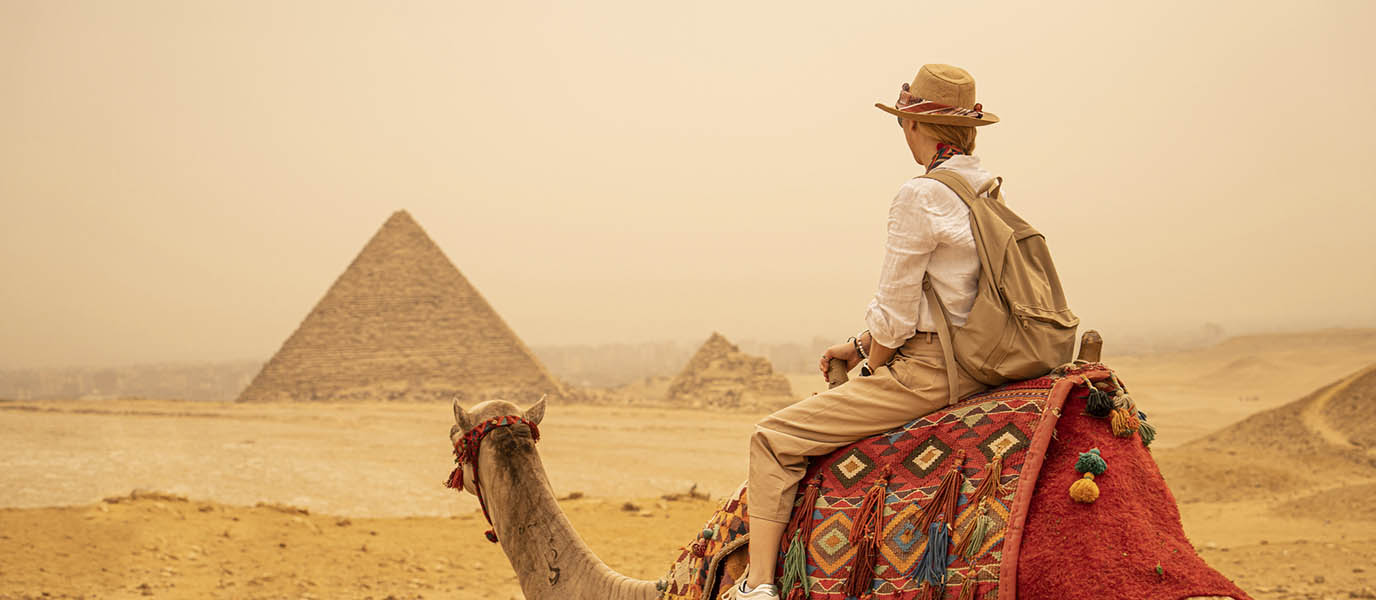Located at the foot of the Mokattam hills in the east of Cairo, the City of the Dead is a great Islamic necropolis which dates from medieval times — or, more accurately, a vast complex of historical necropolises containing all kinds of tombs from different periods, from the humble graves of ordinary people to the sophisticated mausoleums of the local elite. The site is even part of the ‘Historic Cairo’ UNESCO World Heritage Site along with gems such as the Ibn Tulun Mosque and the Citadel of Saladin, among others.
Up to this point, it all seems quite normal, even very interesting, but there’s something else that makes this place unique: it is estimated that between 500,000 and one million people live in these enormous cemeteries where the line that separates the past and the present is remarkably fine.
In any case, to visit the City of the Dead is to penetrate one of the most fascinating aspects of the multifaceted Egyptian capital and to appreciate its many curiosities, from ancient legends and mysteries to genuine architectural gems built on the orders of powerful sultans, passing through the sharp contrasts that define everyday life in Cairo.
A brief history of the City of the Dead
Known to the locals simply as al-‘arafa o Qarafa, meaning ‘the cemetery’, the origins of the City of the Dead date back to ancient Fustat, the first Egyptian capital under Muslim domination, founded in the seventh century. From that time onwards, the area developed as a kind of burial ground, which grew and grew. Among the ordinary tombs were built great mausoleums celebrating governors, important Muslim imams, and even several direct descendants of the prophet Mohammed, as well as other important figures from the Abbasaid, Fatimid and Ayyubid eras.
The Great Qarafa became increasingly important. It came to include mosques and madrasas, all kinds of workshops, and even tombs with rooms built next to them which were used by the families when they came to visit the departed on festival days. Gradually, but almost from its very beginnings, the City of the Dead also became a living city.
By the end of the thirteenth century, under the Mamluks and especially during the long reign of An-Nasir Muhammad, Cairo’s necropolis complex reached the height of its splendour. The expansion of the burial ground to the north of the Citadel of Saladin was particularly marked during the fourteenth and fifteenth centuries. Under Ottoman domination, the necropolis fell into a kind of peaceful lethargy, but regained its momentum during the dynasty of the Vali Mehmet Ali following the Napoleonic occupation, when the City of the Dead recovered its glory. The whole of the royal family (apart from the Sultan himself) are buried in the great mausoleum of Hosh al-Basha, in the Southern Cemetery.
The end of the nineteenth century and the turbulent years of the early twentieth century, however, brought about great change, and the City of the Dead began the complex process that would define its current position.
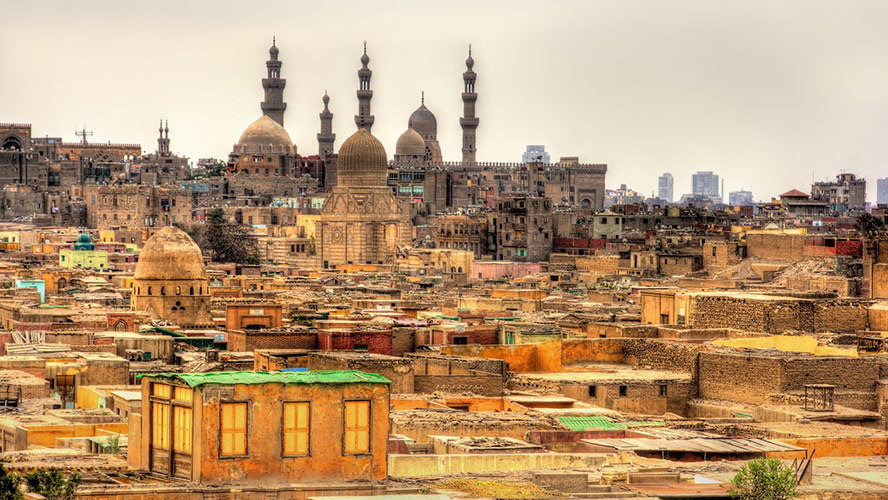
Tombs: from the most modest to opulent mausoleums
For centuries, the far eastern end of the city, far from the areas flooded annually by the Nile, had been developing into a series of cemeteries over 6 kilometres in length, spreading southwards (the older part) and northwards (the more recent part) from the Citadel. A vast necropolis with all kinds of tombs, from the most modest graves to the most opulent mausoleums.
In addition to the small, individual tombs scattered here and there, most common are the typical enclosed plots built to house family tombs (also known as hawsh) or little huts, some highly decorated, some not, and some with courtyards and gardens — something that has facilitated their conversion into austere dwellings.
The other side of the picture, of course, is the great mosque-mausoleums. While some are relatively modest, others are veritable works of art and key pieces of Egypt’s historical heritage. Outstanding examples include:
- The Mausoleum of the Imam al-Shafi’i. Possibly the Southern Cemetery’s most important building, and a masterpiece of Ayyubid architecture in the City of the Dead.
- Hosh al Basha. The great mausoleum belonging to the royal family of Sultan Mehmet Ali, built in the late nineteenth century, also in the Southern Cemetery.
- The Sayyida Nafisa mosque-mausoleum, and the tombs of the Abbasaid Caliphs. Built around the tomb of a female descendant of Mohammed, an Islamic intellectual and teacher, the complex and its neighbouring areas contain the tombs of the prophet’s various heirs, as well as different important figures of the age.
- The burial complex of Sultan Qaitbay. Located in the Northern Cemetery, this is the tomb of possibly the greatest patron of the arts and architecture during the Mamluk period.
- The Mausoleum of Faraj ibn Barquq. Burial complex of Sultan An-Nasir Faraj ( Fifteenth century), one of the Cairo’s outstanding examples of Mamluk architecture and one of the most important monuments in the Northern Cemetery.
The Bab al-Wazir and Bab-al Nasr cemeteries, which are separate from the two great Northern and Southern necropolises, also contain several monuments of greater or lesser importance and, of course, in various states of preservation.
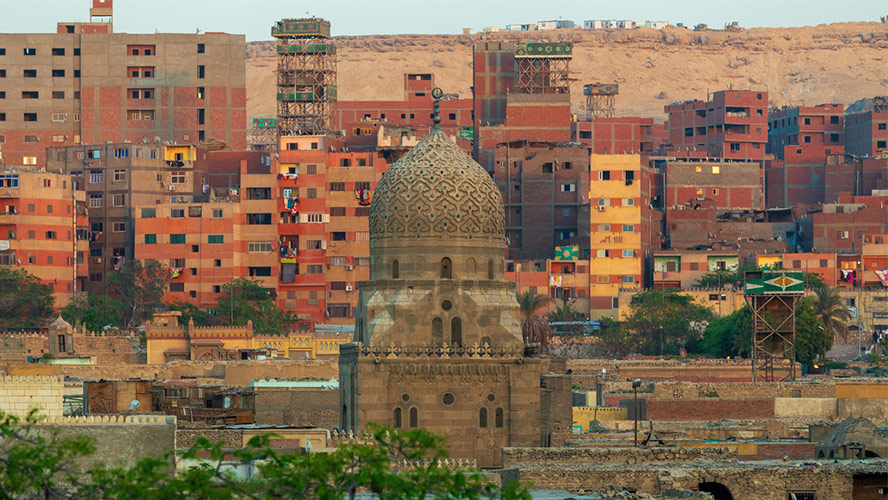
Dwellings among tombs
Myths and legends aside, the fact that the City of the Dead is a living city, another district of Cairo, is due to many different factors — and naturally, the individual dwellings among the tombs are similarly diverse. Historically, the first inhabitants of these ancient necropolises were the people responsible for building and maintaining them. They filled this ever-growing burial ground with life. These were the gravediggers, the various craftsmen and the custodians of the most opulent tombs, but also the priests who watched over these final resting places.
However, from the late nineteenth century and particularly during the twentieth century, the unstoppable population growth of the Egyptian capital, together with the lack of clear boundaries between the expanding urban areas and the ancient necropolises, added to the financial difficulties that many people found themselves in, resulted in an ever increasing number of people moving into these burial complexes and mausoleums, whether belonging to their own families or to outsiders — as makeshift homes.
In any event, the different areas of Qarafa have simple dwellings, built with that purpose in mind, with more or less official status, and provided with basic services, but there are also funeral monuments adapted as places to live. In some areas, buildings of several storeys have been constructed, blurring still further the thin line that separates the City of the Dead from the world of the living.
Practical advice for your visit
Although the City of the Dead is, in a sense, just another district of Cairo, its location and, particularly its vast size, mean that it is almost essential to enlist the services of a local guide if you want to visit it. This is especially the case if you want easy access to the most important monuments within this gigantic necropolis.
You can book a local guide with transport to visit the area and, of course, various organised tours and visits, whether private or in groups, normally include the City of the Dead in their itineraries (although in some cases, these are panoramic tours, and visitors stay on the bus). There are even half-day tours specifically designed to explore this unique area of Cairo in greater depth.
Where to eat near the City of the Dead
It is perfectly possible to enjoy the finest Egyptian or international cuisine in the area of Cairo’s ancient necropolises. Good examples are the various modern Parque Al-Azhar restaurants located between the Bab al-Wazir cemetery and the Northern Cemetery.
Another excellent way to sample the finest gastronomy is to head to any of the three restaurants at the Barceló Cairo Pyramids hotel. (https://www.barcelo.com/es-es/barcelo-cairo-pyramids/). The best international cuisine and typical local flavours make the Nefertari, Horus and Sphinx restaurants an ideal alternative for even the most discerning of palates.
Where to stay near the City of the Dead
Of course, the Barceló Cairo Pyramids hotel is the perfect choice if you want to enjoy a first-class stay in one of the Egyptian capital’s most pleasant areas, just 4 kilometres from the incomparable pyramids of Cheops, Chephren and Mycerinus.
With its 236 modern, fully-equipped guest rooms, 3 restaurants and 3 bars, its panoramic terrace, its temperature-regulated outdoor swimming pool, spa, gymnasium and other facilities and services, this exceptional 4-star establishment, run by the Barceló Hotel Group, offers perfect accommodation for anyone visiting Cairo.




































































